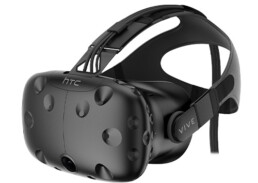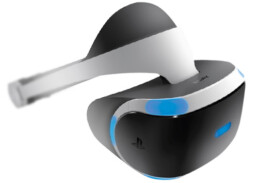Virtual Reality is here to stay
Virtual Reality (VR) invites you to explore alternative worlds as if you’re actually there. Simply take your smartphone and a headset and discover virtual spaces, games, and much more. Even though the technology has been around for years, the current generation of products and devices gets closer than ever to the VR’s original promise: getting elsewhere and connecting to whatever matters most to you.
With the technology advancing every year, the hardware is getting cheaper and the software base is growing steadily. In other words, virtual reality becomes affordable and thanks to massive price drops and discounts on hardware and software bundles, now is the perfect time to get your own VR headset and discover what all the hype is about.
Desktop VR versus Mobile VR
When taking a look at the vast variety of devices, you should know there are two main categories: tethered and mobile headsets. The former is connected to either a computer or a gaming console and delivers the most powerful VR experience. External tracking devices, cameras, and advanced controllers allow for high-end experiences and get the most out of what’s currently possible in VR. However, these headsets are pricey, and with all the cables and additional trackers, movement can be inconvenient and some free space is needed. On the other hand, there are mobile headsets, which are basically empty shells with two optical lenses where the smartphone can be plugged in. Motion tracking is either done by the smartphone’s sensors or built-in headset sensors; thus, there are no cables hindering free movement. The great thing is, one can start for as cheap as fifteen bucks with the simplest headset from Google (Cardboard). The flipside, however, is the limited computing power, resulting in a reduced experience in terms of visual quality and VR possibilities. Ultimately, you get what you pay for. Anyway, we sat down and discussed which 2017 device gets the most bang for the buck – this article is intended to make the market a bit more transparent.
Don’t be limited. In 2018, all-new stand-alone devices are coming, and upgrades to the current generation will be released. Check out our article for what comes next.
Click on any VR Headset to learn more
| HTC Vive | Oculus Rift | PSVR | Samsung Gear VR | Google Daydream View | Zeiss VR ONE Plus | Google Cardboard | |
| Panel/Display i | OLED | OLED | OLED | OLED | OLED | – | – |
| Resolution (combined) i | 2160×1200 | 2160×1200 | 1920×1080 | 2560×1440 | 2560×1440 | depends on smartphone | depends on smartphone |
| Field of view i | 110° | 110° | 100° | 100° | 100° | 100° | 90° |
| Refresh rate i | 90 Hz | 90 Hz | 90-120 Hz | 90 Hz | 90 Hz | depends on smartphone | depends on smartphone |
| Positional Tracking i | yes | yes | yes | Not supported | no | Not supported | Not supported |
| Motion Controller | Vive Controller | Oculus Touch | PlayStation Move | Gear VR Controller | Daydream Controller | Not supported | Not supported |
| Host device | (Gaming) PC | (Gaming) PC | PlayStation 4 | Samsung Smartphone | List of supported Android Phones | Apple and Samsung Smartphones | VR ready smartphones |
| Software platform | SteamVR | Oculus Home | PlayStation | Oculus Home | Daydream VR | Google Play / iOS Appstore | Google Play / iOS Appstore |
| Release date | April 2016 | March 2016 | October 2016 | November 2015 | November 2016 | June 2016 | June 2014 |
| Weight (Headset) | 555 gr | 470 gr | 610 gr | 280 gr (without smartphone) | 220 gr | 350 gr | < 90 gr |
| Price (Updated January 2018) | $599.00 | $399.00 | $330.70 | $129.99 | $99.00 | $49.99 | $15.00 |
Desktop VR Headsets

HTC Vive
| Panel/Display | OLED |
| Resolution (combined) | 2160×1200 |
| Field of view | 110° |
| Refresh rate | 90 Hz |
| Positional Tracking | yes |
| Motion Controller | Vive Controller |
| Host device | (Gaming) PC |
| Software platform | SteamVR |
| Release date | April 2016 |
| Weight (Headset) | 555 gr |
| Price | $599.00 |
The HTC Vive, produced by HTC and developed together with video game industry giant Valve, was released on April 5th, 2016. It comes packed with a pair of motion-tracking controllers and two room-scale sensors. The wireless Base Stations allow creating a 3 x 4 meter dedicated play area where one can physically walk around. Assuming there is enough free space, security features will make sure that the furniture does not get hit. The headset features two AMOLED 3.6” diagonal screens each with 1080×1200 pixel resolution, a 90 Hz refresh rate, and a 110-degree field of view.
While the price tag dropped during the Black Friday sales, it is still at 699€ in Europe (US $600) and requires at least some decent PC hardware to perform smoothly. HTC demands a minimum of an Intel i5-4590 or AMD FX 8350 CPU paired with either an AMD R9 290 or a Nvidia gtx 970 graphics card. These specifications make additional hardware purchases necessary for those who do not own a powerful gaming PC. Fortunately, the PC can be tested for compatibility before the purchase via a SteamVR Performance Test application or HTCs ViveCheck tool.
VR Accessories
Thanks to some great third-party accessories, like the TPCAST wireless adapter, the Vive can now be used without annoying cables. The VR Lens Lab enables the user to install prescription lenses in order to operate the Vive without glasses. Moreover, Leap Motion, a device that can be attached to the Vive’s front, has the ability to accurately track your hands with VR applications. In addition, HTC released the Deluxe Audio Strap and the Tracker, allowing for more wearing comfort and tracking in the room of any device attached to the Tracker (e.g., tennis bat, toy gun). This feature further enhances the entire Vive experience.
With an ever growing software base on Valve’s distribution platform STEAM and HTC’s own Viveport games subscription service (7,99€/month), there is already plenty to explore in VR. Thanks to LibreVR/Revive project, Vive users can also play some of the Oculus Rift exclusive titles. Since the release in 2016, the Vive has matured with all its available add-ons, and it’s for sure one of the best VR experiences consumers can currently get. However, the downside is still the high price, the additional requirement of a powerful PC, and if users aren’t willing to pay extra for the wireless solution, they have to accept less comfortable movement because of the headset’s wiring.
To sum up, the HTC Vive offers the most you can get out of VR at the moment but has a high price tag and needs some of the available add-ons to enjoy the full experience. Buy it if you’re a VR enthusiast for whom price is no object.
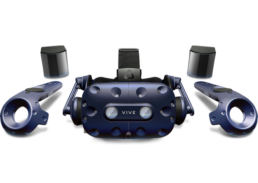
HTC Vive Pro
| Panel/Display | OLED |
| Resolution (combined) | 2880×1600 |
| Field of view | 110° |
| Refresh rate | 90 Hz |
| Positional Tracking | yes |
| Motion Controller | Vive Controller |
| Host device | (Gaming) PC |
| Software platform | SteamVR |
| Release date | April 2018 |
| Weight (Headset) | 555 gr |
| Price | $799.00 |
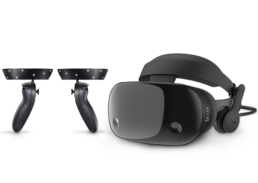
HMD Odyssey
| Panel/Display | OLED |
| Resolution (combined) | 2880×1600 |
| Field of view | 110° |
| Refresh rate | 90 Hz |
| Positional Tracking | yes |
| Motion Controller | Samsung Odyssey Controller |
| Host device | (Gaming) PC |
| Software platform | Windows |
| Release date | October 2018 |
| Weight (Headset) | 645 gr |
| Price | $499.00 |
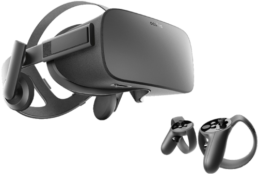
Oculus Rift
| Panel/Display | OLED |
| Resolution (combined) | 2160×1200 |
| Field of view | 110° |
| Refresh rate | 90 Hz |
| Positional Tracking | yes |
| Motion Controller | Oculus Touch |
| Host device | (Gaming) PC |
| Software platform | Oculus Home |
| Release date | March 2016 |
| Weight (Headset) | 470 gr |
| Price | $399.00 |
The Oculus Rift is widely considered to be the origin of the new VR hype and began as a successful Kickstarter campaign in 2012. Two years later, Facebook acquired the company and finally released the consumer version in March 2016. The Rift includes two Oculus Touch controllers and two room-scale sensors for a recommended 3×3 meters physical space. Oculus suggests improving the room tracking quality by purchasing a third sensor that can be easily integrated into the current set-up. The installed displays are comparable to the HTC Vive, using the same 1080×1200 resolution per eye (2160×1200 combined), with a 90-Hz refresh rate. The 110° field of view is similar to the Vive’s.
The integrated Rift headphones set the headset apart from the Vive, for which the audio strap (~100€) has to be purchased separately. The Oculus Rift has benefited from recent sales and is now available for 419€ (US $379). While it is noticeably cheaper than the Vive, the hardware requirements for the PC that powers the headset are basically the same: Oculus recommends 8GB RAM, a GTX 960/R9 290 GPU, and an Intel i3 6100/AMD FX 4350 CPU as a minimum configuration. Similarly to ViveCheck, there is an Oculus tool for checking the existing computer hardware.
VR Accessories
Both accessories, the leap motion hand tracker, and the TPCast wireless adapter are available for the Rift, too. Furthermore, there is plenty of general VR equipment that can, assuming one is willing to pay for it, enhance the VR experience, for example, the Kor-FX that offers a gaming vest with a haptic feedback system, adding an additional layer of immersion; the 3dRudder Foot Controller that makes movement in VR feel more natural or VirZoom’s Bike Controller that turns your VR set-up into a workout experience.
The main source for VR games and apps is called Oculus Home, and it includes a few games that previously could be played exclusively on the Rift. Lately, native stream integration and updates of the central showroom made the navigation and handling much more convenient. As with the Vive, the Oculus Rift matured over time and despite minor differences in the perceived controller and tracking quality, both systems offer a pretty similar experience.
Considering the lower price tag of the Oculus Rift compared to the Vive, it is a very compelling compromise between money spent and high-end VR experience. The saved money could be spent on the wireless adapter or potent PC hardware. Buy it if you want the best price for VR state-of-the-art.

Playstation VR
| Panel/Display | OLED |
| Resolution (combined) | 1920×1080 |
| Field of view | 100° |
| Refresh rate | 90-120 Hz |
| Positional Tracking | yes |
| Motion Controller | PlayStation Move |
| Host device | PlayStation 4 |
| Software platform | PlayStation |
| Release date | October 2016 |
| Weight (Headset) | 610 gr |
| Price | $269.00 |
The PlayStation VR (short: PSVR), formerly known under the codename Project Morpheus, was released in October 2016 by Sony Interactive Entertainment. As the name suggests, the headset is designed to work with Sony’s PlayStation 4 and PlayStation 4 Pro video game consoles. It uses a 5,7″ OLED display with a resolution of 960 × 1080 pixels per eye, featuring a 100° field of view and 90-120 Hz refresh rate. In order to work properly, the PSVR requires a PlayStation 4 console and the PlayStation camera for positional tracking.
The PSVR includes a microphone for social experiences and offers 3D sound via a headphone jack, but the headphones are not included. In October 2017, Sony released a slightly upgraded version of the headset with installed headphones, a thinner connection cable to the console, and an upgraded HDR-capable processing unit. Unfortunately, this version is currently exclusive to the Japanese market. Over here, the headset can be purchased bundled with the camera (but without the PlayStation Move controllers) and certain games for less than 400€ (USD $349). Considering the PlayStation 4’s price is below 300€, the Sony VR experience is the most cost-effective tethered solution. Therefore, it is no wonder that PSVR outsold both the HTC Vive and the Oculus Rift.
Even though the PlayStation 4 lacks computing power, compared to modern gaming PCs, the PSVR is able to deliver reliable tracking and a responsive and smooth gaming experience. Sony claims to offer over 100 VR-compatible games and applications, including music and movie streaming services. The only small downside is that most bundles exclude the PlayStation Move controllers (100€) and the Aim controller (90€) for shooting games. Adding those useful accessories so that players can enjoy the whole PSVR experience puts the PSVR closer to competitor Oculus Rift in terms of price.
In conclusion, the PSVR offers a high-quality experience at a considerably lower price tag compared to the HTC Vive and Oculus Rift. Yet, if starting from scratch, buying the PlayStation 4, a PSVR bundle, and additional controllers aren’t exactly cheap.
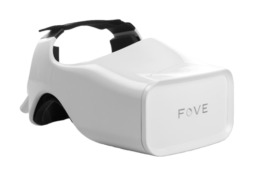
FOVE
| Panel/Display | OLED |
| Resolution (combined) | 2560×1440 |
| Field of view | 100° |
| Refresh rate | 70 Hz |
| Positional Tracking | yes |
| Motion Controller | Steam/PlayStation/Xbox Controllers |
| Host device | (Gaming) PC |
| Software platform | SteamVR |
| Release dateMay | 2016 |
| Weight (Headset) | 520 gr |
| Price | $599.00 |
Mobile VR Headsets
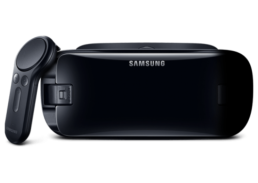
Gear VR
| Panel/Display | OLED |
| Resolution (combined) | 2560×1440 |
| Field of view | 100° |
| Refresh rate | 90 Hz |
| Positional Tracking | Not supported |
| Motion Controller | Gear VR Controller |
| Host device | Samsung Smartphone |
| Software platform | Oculus Home |
| Release date | November 2015 |
| Weight (Headset) | 280 gr (without smartphone) |
| Price | $129.00 |
The initial consumer version of the Gear VR was released in November 2015, for the Galaxy S6 generation of Samsung’s top smartphones. Since then, alongside every new generation of top smartphones (Galaxy and Note series), a new version of the VR goggles has been released. The latest versions (SM-R324, SM-R325) include the Gear VR Controller, a Bluetooth motion tracking device that adds a new layer to both menu navigation and game controls. The controller is downwards compatible and works with older headset versions, too. The Gear VR bundle is available for around 100€, and sometimes, it is included at no additional cost in pre-orders of new Samsung phones or through related promotional events. Nevertheless, when adding the retail price of the smartphone, the Gear VR price tag comes close to the HTC Vive.
Samsung partnered with Oculus to offer a rich software ecosystem for the Gear VR. In addition to Samsung’s own VR browser and gallery app, the Oculus Home platform can be used to access applications, games, and 360° video content. It is worth mentioning that some Oculus Rift games are also available for the Gear VR, making the VR experience on the Gear VR outstandingly unique. For the price, it is the closest you can get to a high-end VR experience. However, the computing power of even the newest smartphones is limited, especially compared to tethered headsets, and players’ visual expectations shouldn’t be set too high.
Sadly, the Gear VR is only compatible with Samsung’s top smartphones. However, more than five million headsets have been sold, and the well-thought-out Oculus Home integration guarantees a quality experience that cannot be matched in this pricing segment.

Oculus Go
| Panel/Display | LCD |
| Resolution (combined) | 2560 x 1440 |
| Field of view | 100° |
| Refresh rate | 60-72 Hz |
| Positional Tracking | Not supported |
| Motion Controller | Oculus Go Controller |
| Host device | Stand-alone |
| Software platform | Oculus Home |
| Release date | May 2018 |
| Weight (Headset) | 468 gr |
| Price | $219.00 |
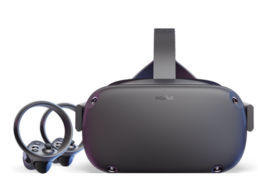
Oculus Quest
| Panel/Display | OLED |
| Resolution (combined) | 3200 x 1440 |
| Field of view | 100° |
| Refresh rate | 72 Hz |
| Positional Tracking | yes |
| Motion Controller | Oculus Touch |
| Host device | Stand-alone |
| Software platform | Oculus Home |
| Release date | Spring 2019 |
| Weight (Headset) | 570 gr |
| Price | $399.00 |
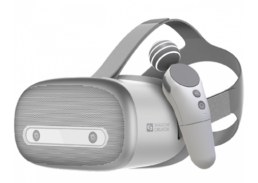
Shadow VR
| Panel/Display | LCD |
| Resolution (combined) | 2560 x 1440 |
| Field of view | 110° |
| Refresh rate | – |
| Positional Tracking | yes |
| Motion Controller | Shadow Controller |
| Host device | Stand-alone |
| Software platform | Viveport/ViveWave |
| Release date | November 2018 |
| Weight (Headset) | – |
| Price | $399.00 |
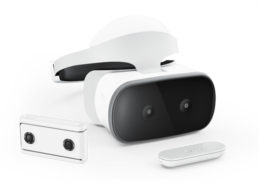
Mirage Solo
| Panel/Display | LCD |
| Resolution (combined) | 2560 x 1440 |
| Field of view | 110° |
| Refresh rate | 75 Hz |
| Positional Tracking | yes |
| Motion Controller | Daydream Controller |
| Host device | Stand-alone |
| Software platform | Daydream VR |
| Release date | May 2018 |
| Weight (Headset) | 645 gr |
| Price | $399.00 |
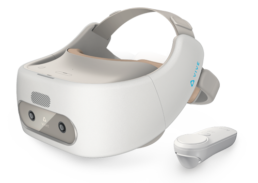
VIVE Focus
| Panel/Display | OLED |
| Resolution (combined) | 2880 x 1600 |
| Field of view | 110° |
| Refresh rate | 75 Hz |
| Positional Tracking | yes |
| Motion Controller | VIVE Focus Controller |
| Host device | Stand-alone |
| Software platform | Wive Wave |
| Release date | November 2018 |
| Weight (Headset) | 679 gr |
| Price | $599.00 |
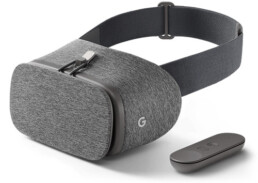
Google Daydream
| Panel/Display | OLED |
| Resolution (combined) | 2560×1440 |
| Field of view | 100° |
| Refresh rate | 90 Hz |
| Positional Tracking | no |
| Motion Controller | Daydream Controller |
| Host device | List of supported Android Phones |
| Software platform | Daydream VR |
| Release date | November 2016 |
| Weight (Headset) | 220 gr |
| Price | $99.00 |
The Google Daydream View was released in November 2016 and was recently (October 2017) succeeded by a slightly improved but more expensive version. It comes with a motion tracking Bluetooth controller and works similarly to the Google Cardboard or Gear VR. After the setup process, which involves installing the Daydream app from the store and following the instructions, the smartphone can be inserted into the headset. Unlike the Gear VR, the Daydream View supports multiple smartphones with the headset, including select models from ZTE, Huawei, Samsung, Motorola, Asus, LG and, of course, Google’s own Pixel/Pixel 2 series.
The menu and store connection features are comparable to Oculus Home but feel less extensive in terms of the available apps and games. However, there is a lot of content to be explored and, thanks to the fabric design, the headset’s look is less tech-nerdy and more comfortable than the Cardboard and the Gear VR. For the owner of a supported smartphone from the list, the Daydream View is a valid alternative to Samsung’s Gear VR.
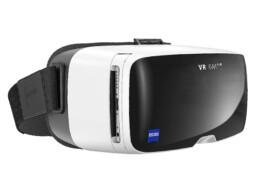
Zeiss VR One
| Panel/Display | – |
| Resolution (combined) | depends on smartphone |
| Field of view | 100° |
| Refresh rate | depends on smartphone |
| Positional Tracking | Not supported |
| Motion Controller | Not supported |
| Host device | Apple and Samsung Smartphones |
| Software platform | Google Play / iOS Appstore |
| Release date | June 2016 |
| Weight (Headset) | 350 gr |
| Price | $49.99 |
The Zeiss VR ONE Plus, the successor to the VR ONE, was released in June 2016 by German optics and camera lens manufacturer Zeiss. It features a tray for ideal positioning of the smartphone and a translucent plastic front panel, allowing users to utilize the smartphone camera for AR purposes. Luckily, the headset has now a universal tray that holds any smartphone with a display size between 4,7 and 5,5 inches; the older model needed a specific tray depending on the type and size of the smartphone. The VR ONE Plus includes high-quality but non-adjustable lenses and offers comfortable handling. Unlike the Daydream View or Gear VR, there is no controller or touch panel for navigation included. The price tag dropped and is now about 50€.
Zeiss provides a few apps, especially for their VR headset on both iOS and Android. Unfortunately, these are tech demos at best, since they add little value and feel unpolished. However, all the standard VR apps available in their respective stores can be used and allow, due to the quality lenses, a good VR experience. In conclusion, the VR ONE Plus is manufactured very well but lacks dedicated high-quality content and a controller device. It might be the choice for smartphones that are not supported by Daydream View or Gear VR.
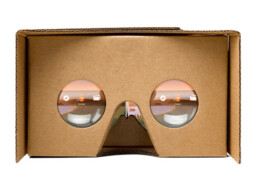
Google Cardboard
| Panel/Display | – |
| Resolution (combined) | depends on smartphone |
| Field of view | 90° |
| Refresh rate | depends on smartphone |
| Positional Tracking | Not supported |
| Motion Controller | Not supported |
| Host device | VR ready smartphones |
| Software platform | Google Play / iOS Appstore |
| Release date | June 2014 |
| Weight (Headset) | < 90 gr |
| Price | $15.00 |
The Google Cardboard headset, which is literally made of cardboard, was released in June 2014. It is the perfect entry into VR since it’s super cheap and compatible with almost any device. There are dozens of different versions, e.g., do-it-yourself manuals, and free promotional gifts, with and without a head strap but always featuring a pair of simple plastic lenses. There is no controller, no buttons and often, not even a head strap. Consequently, the wear comfort is low, especially over time. However, the headset is sufficient for testing simple VR apps (e.g., watching YouTube in VR) or games and getting an idea of the technology. To sum up, it is the best headset for curious people or for use during promotional events to take the first step into the VR sphere.
